Tomb 15
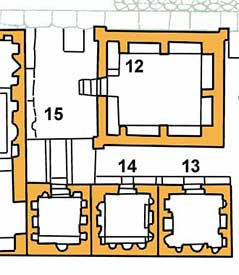 Tomb 15 is the only tomb from the group formed by tombs 13-15 still facing the Via Severiana.
Tomb 15 is the only tomb from the group formed by tombs 13-15 still facing the Via Severiana.
The biclinium, disappeared at tombs 13 and 14, has been preserved at this one.
Tomb 15 is partly bounded on the right side by the enclosure of tomb 16. Above the entrance an inscription has been attached which probably does not belong to this grave. We find the name of the owner also in tomb 29, and also the size of the burial chamber, mentioned in the inscription, corresponds better with the size of tomb 29. So, probably this inscription belonged to tomb 291.
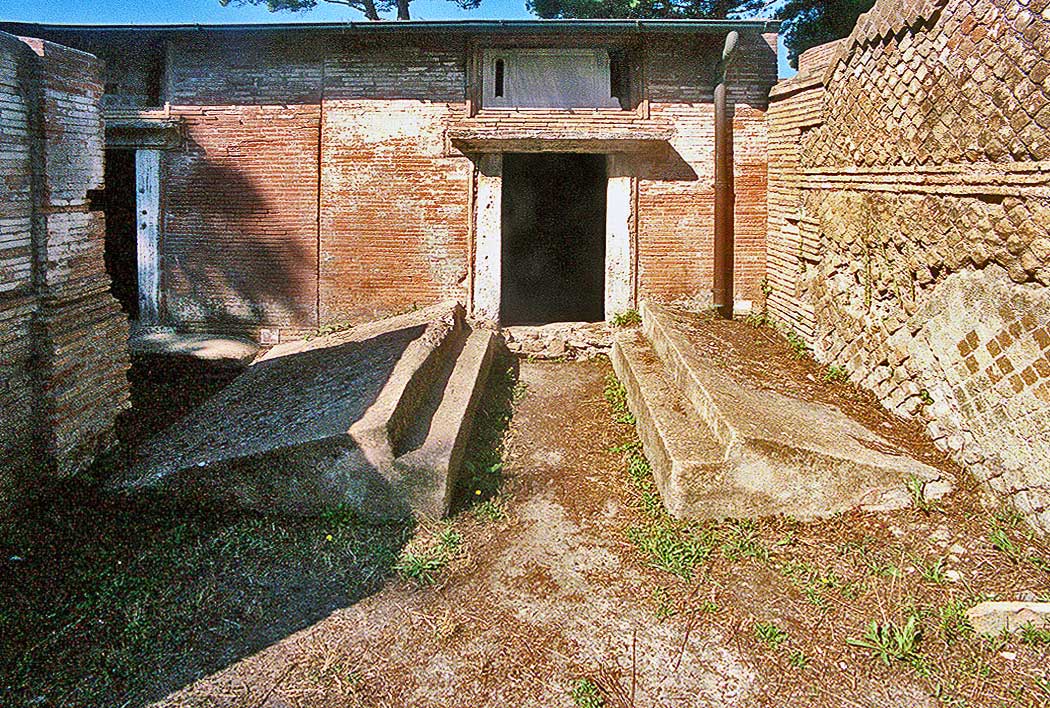
On the right side the wall of the enclosure of tomb 16.
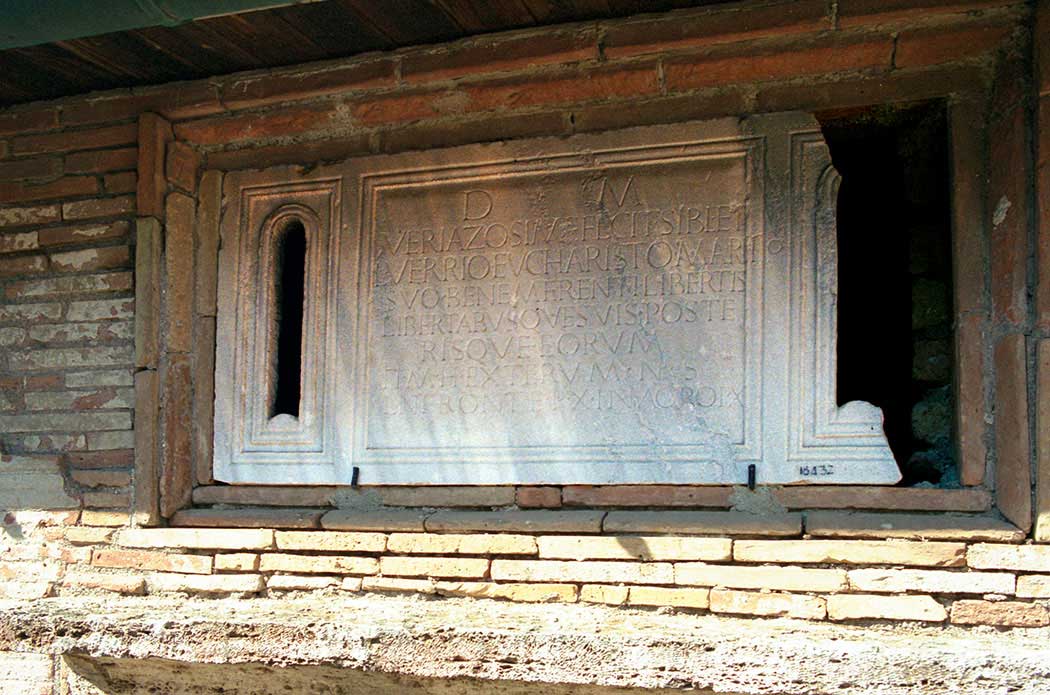
VERIA ZOSIME FECIT SIBI ET
L(ucio) VERRIO EVCHARISTO MARITO
SVO BENE MERENTI LIBERTIS
LIBERTABVSQVE SVIS POSTE
RISQVE EORVM
H(oc) M(onumentum) H(eredem) EXTERVM N(on) S(equetur)
IN FRONTE P(edes) X IN AGRO P(edes) X
The inscription on a marble slab above the entrance says that this grave was built by Veria Zosime and was meant for her beloved husband Lucius Verrius Eucharistus, for herself, and their freed slaves, and their heirs. The area of the tomb was 10 x 10 Roman feet.
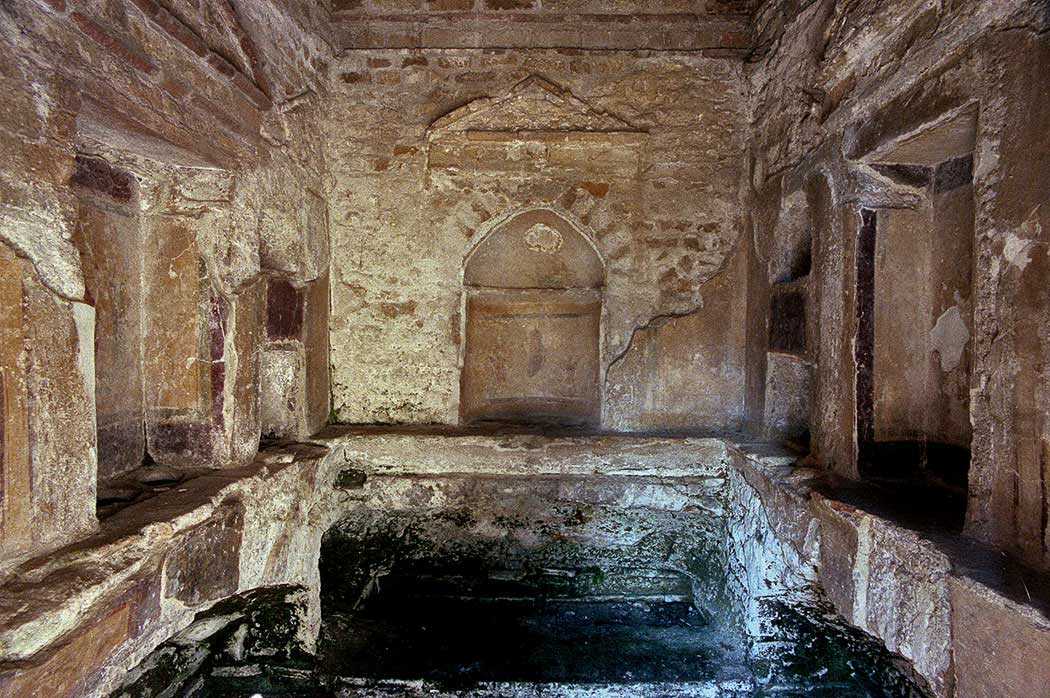
The walls are separated in two parts by a simple horizontal moulding. Below the moulding were arcosolia for inhumation and above the moulding smaller niches for cremation: four niches in the wall with the entrance door, five in the side walls.
In the back wall there is only one central niche with a triangular tympanum in the top. Below the floor, which no longer exists, three formae were brought to light.
Tomb 15 had a rich decoration. Time, however, did its destructive work. From the fine decoration of the niches only small parts are left.
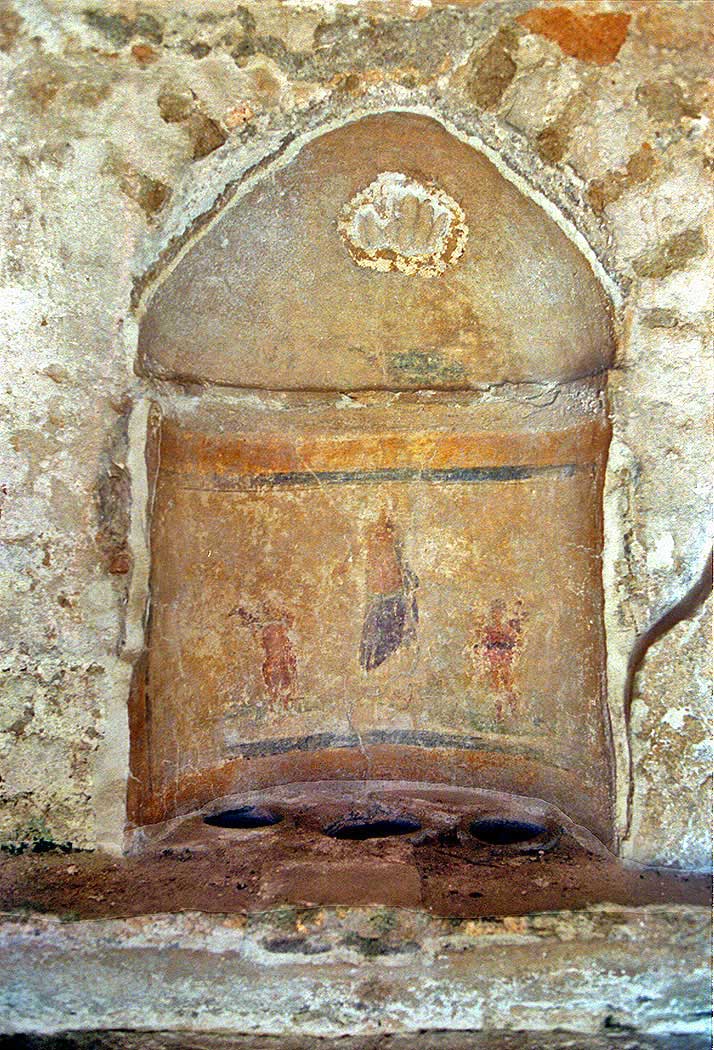
In a large niche in the back wall is a picture of a woman. Apart from a purple dress hanging down from her shoulder over her hips she is naked. Next to her are two youths. The one on her right side hands over a mirror and the other one, to her left, holds open a box. Above the niche was a stucco shell. One may conclude that we have to do with Venus. The same scene you can find also in Pompeii and Ostia, and is explained as a symbol of liberty and life.
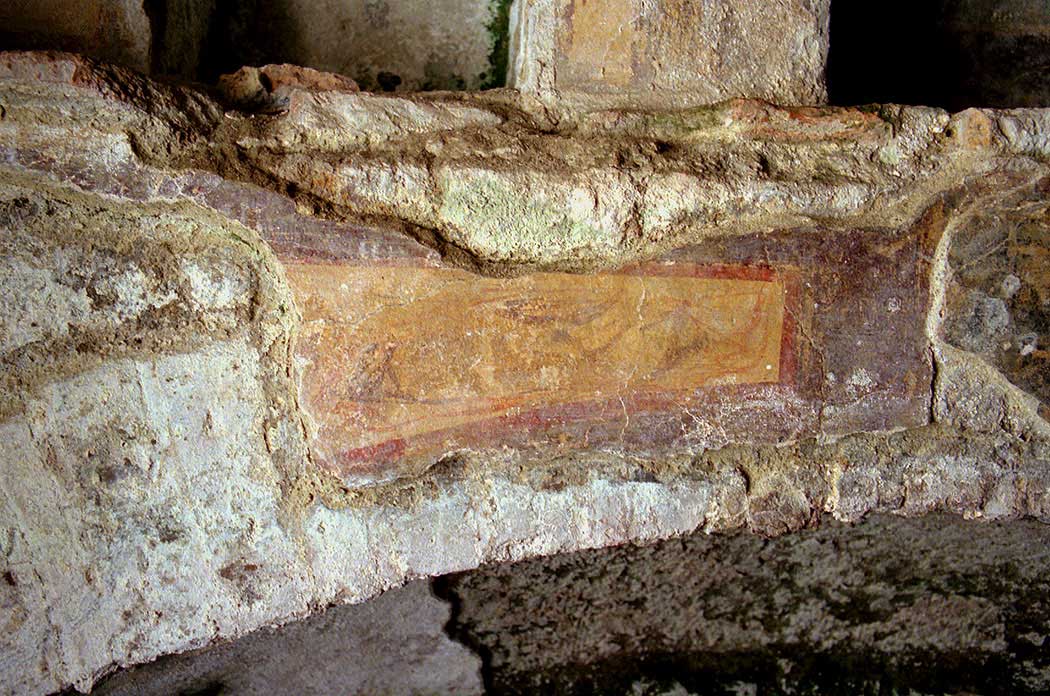
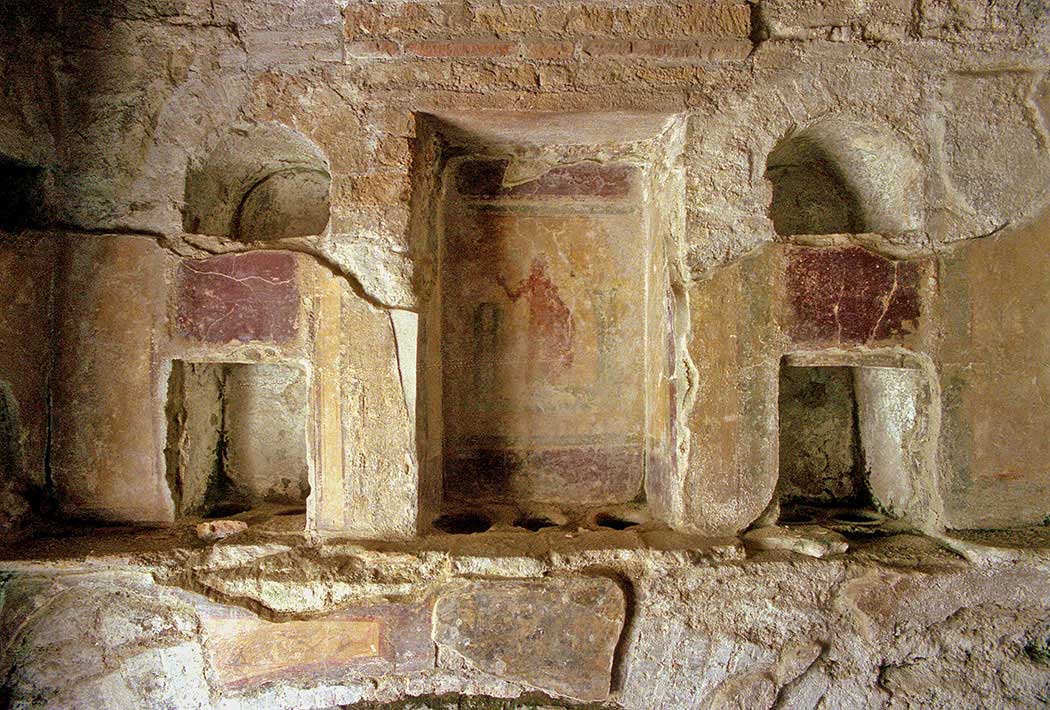
In the central niche in the left wall is a picture of a man on a yellow background with red stripes. He is wearing a red dress which is falling down from his left shoulder upon his right arm. The man is waiting and carries a rod in his left hand.
The arch of the lower arcosolium was once nicely painted too. Only a very small part has been preserved.
In the central niche in the right wall is a picture of a man with a rod, in this case in his right hand.
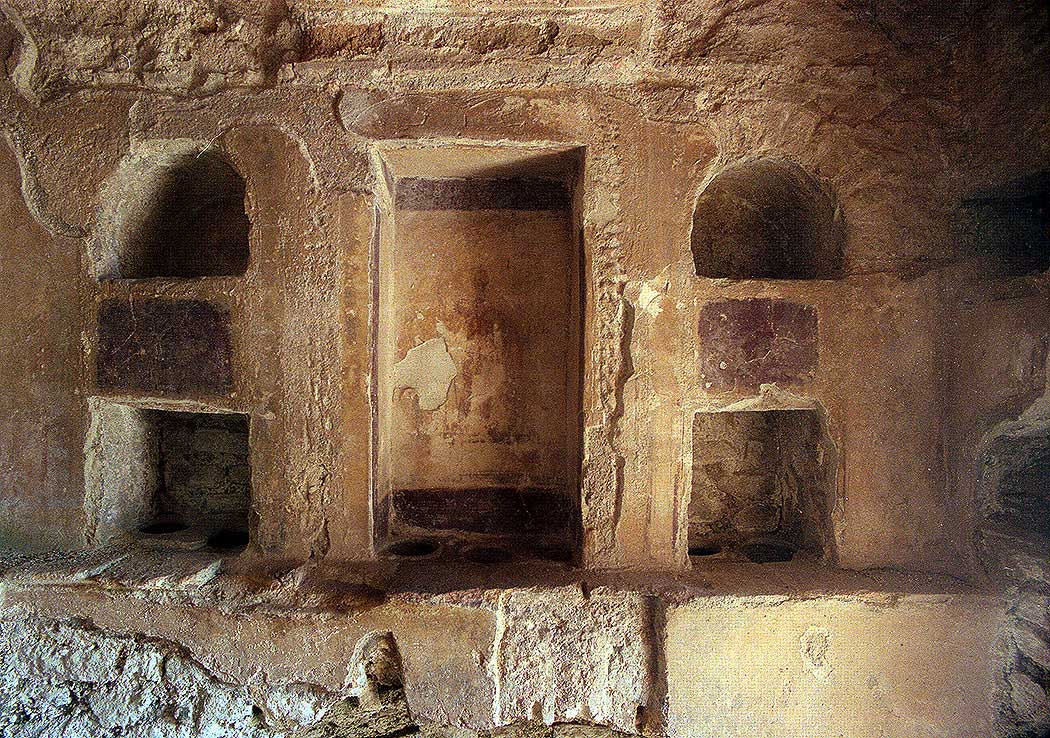
- Sources
- Russel Meigs - Roman Ostia, At the Clarendon Press 1973
- Guido Calza - Necropoli nell'Isola Sacra'(1940)
- Dr. Jan Theo Bakker.
- Hilding Thylander - Inscriptions du port d'Ostie (Lund C W K Gleerup 1952).
- Ida Baldassarre, Irene Bragantini, Chiara Morselli and Franc Taglietti - Necropoli di Porto, Isola Sacra (Roma 1996).
- Notes
- 1:The suppostion of the place of origin of the inscription is borrowed from I. Baldassarre. Guido Calza mentions that the marble plate with inscription has been found 'not in situ', but he gives no reason why it should belong to this tomb.
Isola Sacra Index (D)

Speciale sectie over de Romeinse begraafplaats van Portus (Engels)....
Weiterlesen ...Leptiminus (Englisch))
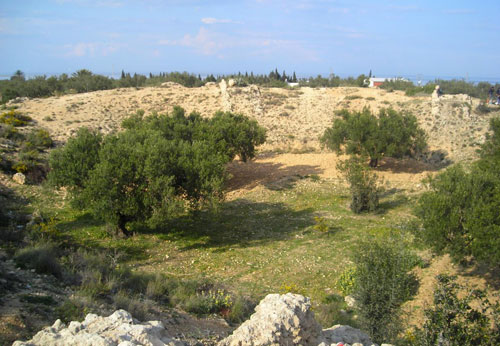
At the site of present-day Lamta on Tunisia's east coast, there was already a port city named Leptis Minor ....
Weiterlesen ...Römisches Seehandelsrecht (Englisch)

Roman law is the finest monument that Rome bequeathed to Western Europe....
Weiterlesen ...Sullecthum (Salakta) Englisch

In the Sahel, in the Tunisian province of Madhia, we find by the sea the small town of Salakta....
Weiterlesen ...Colonia Julia ad Turrem Libisonis (Englisch)

.....probably founded by Julius Ceasar around 46 BC, was located in the north-west of Sardinia.
Weiterlesen ...
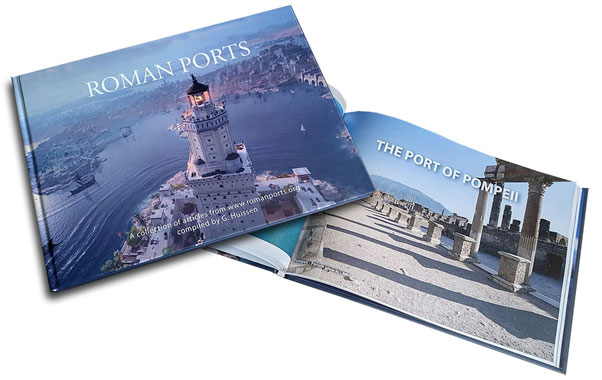
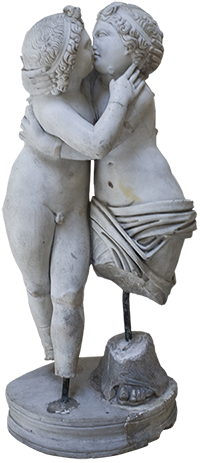 We are committed to providing versions of our articles and interviews in several languages, but our first language is English.
We are committed to providing versions of our articles and interviews in several languages, but our first language is English.